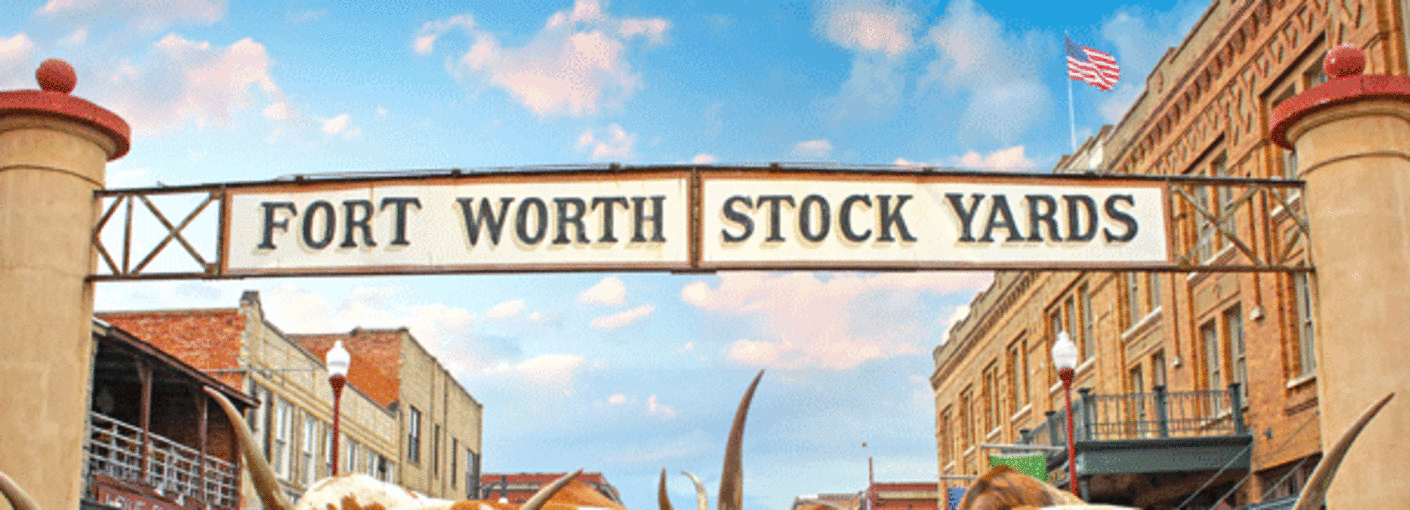You don't have to go far to hear "Chisholm Trail" in Fort Worth. But what was the Trail? Why is it important to Fort Worth today? Here are some fast facts to aid your discovery of the Modern West.
 WHAT IS A CATTLE DRIVE?
WHAT IS A CATTLE DRIVE?
It is the movement of cattle from one location to another, generally for the purpose of selling and/or moving them to other pastures. The most famous cattle drives were from Texas to Kansas after the Civil War.
WHO WAS JESSE CHISHOLM?
Jesse Chisholm (1805 – 1868) was a trader and plainsman of Scotch and Cherokee background. He was fluent in 14 Native American languages and played an integral role in many treaties between tribes and the American government. He scouted and developed his namesake trail and used it to drive cattle to Kansas, where the cattle were then shipped east to be sold for better prices.
HOW MANY CATTLE WENT UP THE CHISHOLM TRAIL?
From the start of the trail drives in 1867 to 1871, millions of longhorns were taken to the Kansas Railhead. It is estimated that 10 million longhorns went up the Chisholm Trail and the Western Trail before new rail lines to Texas made the long trail drives no longer necessary.
HOW LARGE WERE THE INDIVIDUAL CATTLE DRIVES?
The typical herd going up the trail included approximately 2,500 cattle, 10 to 12 cowboys, a remuda of extra horses and a chuck wagon for food and gear. Every day at 11:30am and 4pm, six drovers on horseback walk sixteen longhorns down East Exchange Street, to pay homage to these cattle drives. It is the world's only twice-daily cattle drive.
WHAT WAS THE ROUTE OF THE CHISHOLM TRAIL?
The cattle taken along the Chisholm Trail came from south Texas toward San Antonio and straight north past Belton, Waco and Fort Worth before crossing the Red River.
WHAT WERE OTHER NAMES FOR THE CHISHOLM TRAIL?
According to the Texas Historical Commission, the Chisholm Trail had various other names, including the McCoy Trail, the Great Texas Trail, the Cattle Trail, the Eastern Trail, and the Kansas Trail.
WHO WAS JOSEPH MCCOY?
Joseph McCoy (1837 – 1915), was a cattle trader and had a hand in creating the Chisholm Trail. He conceived of the idea for a railroad extension to Abilene, Kansas, where he developed cattle pens needed to house the cattle on rail cars. He then promoted the appropriate route for cattle drovers to take.
WHAT IS THE CONTROVERSY OVER THE NAME OF THE TRAIL?
Some people assert that the Chisholm Trail was not in Texas and that it instead began in Oklahoma. However, according to the Texas Historical Commission, in common usage the name Chisholm Trail was applied to extensions of the original Jesse Chisholm Trail covering the length of Texas. Books on the Chisholm Trail by Wayne Gard and Don Worcester and federal legislation directing the study of the Chisholm Trail and Western Trail also take this view.
WHY WAS IT NECESSARY TO DRIVE CATTLE TO KANSAS?
After the Civil War, millions of cattle running wild in Texas were worth only $2 or less per head, but worth $15 to $25 per head in Kansas. The money from the sale of cattle was responsible for bringing Texas out of the economic depression caused by the war.
WHERE DID THE TRAIL DRIVE THROUGH FORT WORTH?
Many of the cattle drives came through downtown Fort Worth along today's Commerce Street. They were taken north of downtown to bed down for the night in the Stockyards. The drover (cowboy) would find and purchase supplies, food and, if necessary, more cowboys in Fort Worth before heading back on the trail.
-
Fort Worth Film History
Fort Worth is no stranger to the movie camera. Cowtown has been seen in feature films, television shows, and...

